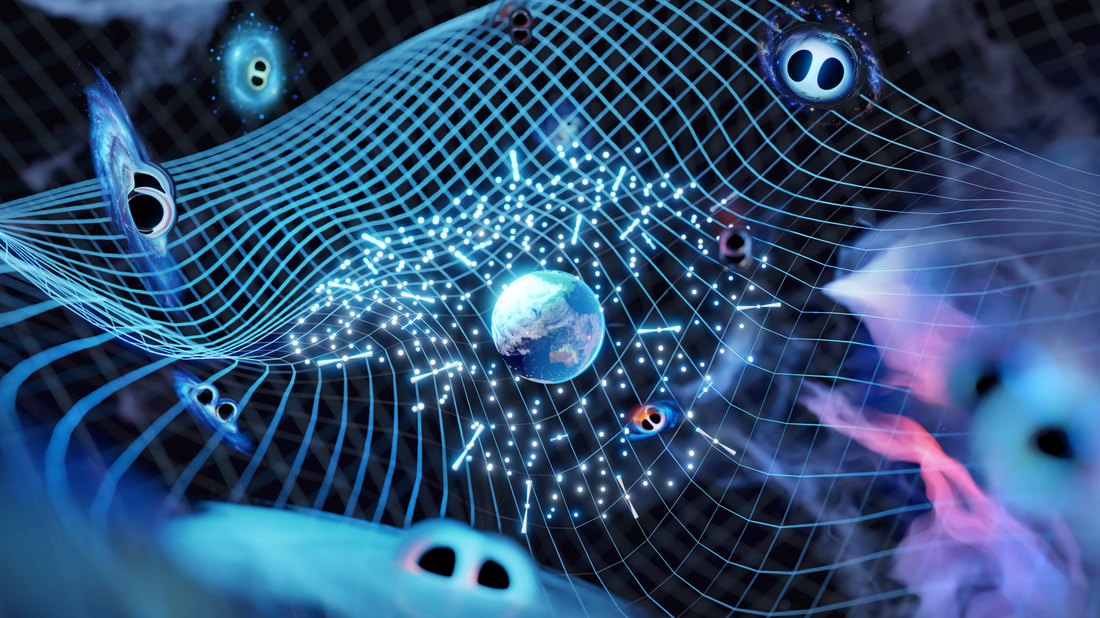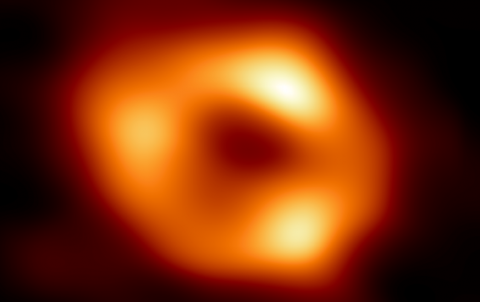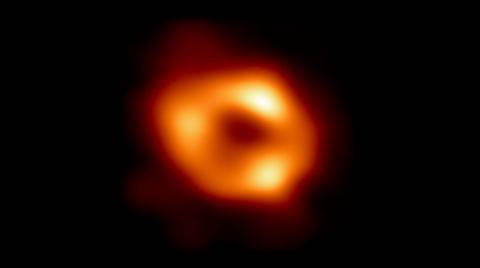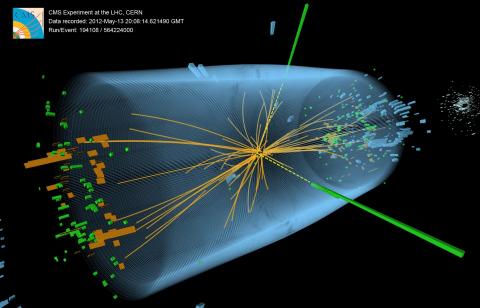Reactions: evidence found of a cosmic background of gravitational waves possibly produced by supermassive black hole collisions
The International Pulsar Timing Array (IPTA) consortium has discovered evidence for the existence of a cosmic background of gravitational waves. The results, published by different IPTA consortia in several scientific journals, would show that this cosmic background would be the result of collisions of supermassive black holes. In 2015, researchers from the LIGO and Virgo collaborations made the first direct observation of gravitational waves caused by the collision of two stellar-mass black holes. These waves oscillate several times per second. What the consortia have now found are gravitational waves emitted by supermassive binary black holes at the centre of galaxies, waves that oscillate on timescales of many years.

Credit: OzGrav.
Font - fondo cósmico EN
José Antonio Font
Professor of Astronomy and Astrophysics at the Universitat de València in the Department of Astronomy and Astrophysics and at the Astronomical Observatory, and coordinator of the activities of the Virgo Group of the Universitat de València for the detection and analysis of gravitational waves (LIGO-Virgo-KAGRA collaboration)
This is undoubtedly a very important finding in the field of gravitational-wave astronomy. In 2015 the LIGO and Virgo collaboration initiated this field of research with the first observation of the gravitational signal from the collision of two black holes, GW150914. Since then, LIGO and Virgo have observed around a hundred signals, all of them associated with collisions of binary systems consisting of two black holes, two neutron stars, or mixed binary systems consisting of a black hole and a neutron star.
Now, results from these new experiments, collectively called Pulsar Timing Arrays (PTAs), have uncovered very clear evidence for the existence of a cosmic background of gravitational waves produced by black hole collisions.
What is the difference between what LIGO/Virgo observe and what PTA observe, if it appears that in both cases they are collisions of black hole binaries? There are several differences:
- The first difference is that the LIGO/Virgo black holes are of stellar origin, with masses typically less than 100 times the mass of the Sun. Being of stellar origin means that they typically form at the end of the lives of very massive stars, when they gravitationally implode as they run out of fuel. However, PTA black holes are supermassive (and not of stellar origin), with masses typically in the range of hundreds of thousands of Suns and billions of Suns. These supermassive black holes must form by aggregation of other, less massive black holes.
- The second difference is that the frequency of the gravitational waves detected by LIGO/Virgo and by the PTAs are very different (due to the huge disparity in the mass of the sources involved in each case). In the case of LIGO/Virgo, the detected signals have frequencies (at the time of the collision) around tens of Hz or a few kHz. In the case of the PTAs, the detected signals have frequencies in the micro Hz range and even lower, down to nano Hz (hence one of the experiments is called nanoGrav). Thus, the PTA observations open the low-frequency window in the gravitational spectrum.
- The third difference is that, just as LIGO/Virgo detect signals emitted by individual collisions (for example, GW150914 is the signal produced by two black holes and GW170817 is the signal produced by two neutron stars), PTAs detect the "sum" of multiple individual signals, technically known as the "stochastic background of gravitational radiation". The adjective "stochastic" indicates the statistically random character of the individual signals that give rise to the total background. That is, what happens is that every collision of two supermassive black holes that has occurred in the history of our universe has produced a gravitational signal. When the signals from all the collisions are combined (added together), that produces a background. That's what the PTAs have detected, and it's a really phenomenal finding.
Alicia Sintes - fondo cósmico EN
Alicia Sintes
Professor of Theoretical Physics at the University of the Balearic Islands in the Department of Physics & IAC3, and member of the Relativity and Gravitation group, which is part of the LIGO and GEO consortia and the e-LISA and Einstein Telescope projects
Today is an exciting day. It is clear that gravitational astronomy is here to stay and that it will revolutionise our current understanding of the universe.
More than seven years have passed since the first direct observation of gravitational waves with the LIGO detectors. Now, the International Pulsar Timing Array (IPTA) consortium has opened a new window on the cosmos by making observations in the nanohertz band. They have evidence for a stochastic background of gravitational waves from binary systems of supermassive black holes. That is, from the merging of galaxies.
In the history of astronomy, every time a new window in the electromagnetic spectrum has been opened, there have been great discoveries. Gravitational waves provide us with a new spectrum and with information complementary to that of light. The Pulsar Timing Array opens the window to low frequencies; the ground-based detectors (LIGO-Virgo-KAGRA) cover high frequencies and with them, phenomena involving stellar mass bodies. I am looking forward to the launch of the future LISA space mission (2037) to cover the frequency band between PTA and ground-based ones, as well as the third generation detectors with which to do high-precession gravitational wave astronomy, and with the observation of millions of events per year.
Today, I congratulate IPTA for the results obtained after so many years of observation.
Sascha Husa - fondo cósmico EN
Sascha Husa
Lecturer of Theoretical Physics at the University of the Balearic Islands and member of the Relativity and Gravitation group, which is part of the LIGO and GEO consortia and the e-LISA and Einstein Telescope projects
It is a revolutionary finding in the sense that the Pulsar Timing [PTA] method is proven to be able to detect signals. The sensitivity of this method will slowly increase and it is hoped that, at some point in the future, we will be able to learn more about the sources of these signals.
The big difference with LIGO and other observatories such as LISA or the Einstein Telescope is that with these we detect individual signals and not just a stochastic background. In addition, it is already possible to identify the sources of the signals observed with LIGO and LISA, and to learn directly about astrophysics, cosmology and fundamental physics. With Pulsar Timing this phase of learning about astrophysics and other areas will take more time, but the fact that very low frequencies, and thus new aspects of physics, can be observed is very exciting.



